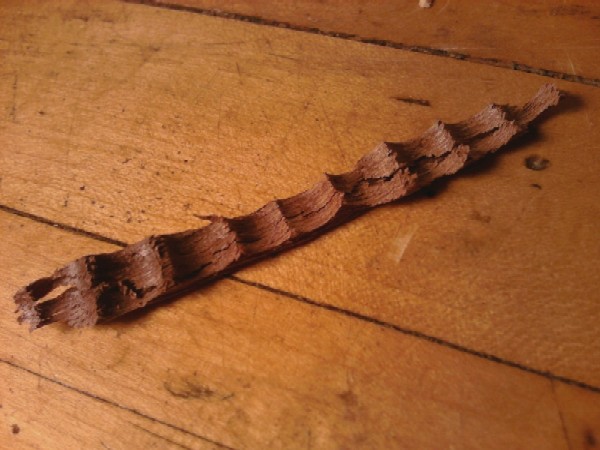 My Mom has a puzzle that she glued together and wanted to display. She wanted something rustic to complement the subject matter of the puzzle and decided that barnwood would be appropriate. My parents were able to get some barnwood from a friend's crumbling barn that they thought would be nice.
My Mom has a puzzle that she glued together and wanted to display. She wanted something rustic to complement the subject matter of the puzzle and decided that barnwood would be appropriate. My parents were able to get some barnwood from a friend's crumbling barn that they thought would be nice.After getting the dimensions of the puzzle, misplacing them, and asking for them again, I was able to get some shop time to put together what she wanted. She asked for a simple frame that would be 3" wide. The puzzle is 20" by 27 1/4", so our dimensions were set.
I had a couple of weeks of leave at Christmas so I had plenty of time. I also had the urge to test my new Freud stack dado that I received as a gift. I put my old Oldham blade in my tablesaw to prevent possible damage to my good blade and ripped a couple of pieces to 3". The dado blade was swapped in and partially buried in a sacrificial fence and set for a 1/4" cut. I was very happy with the clean rabbet cut.
A few cut with my miter saw and I was ready to assemble. I've been wanting to try my Kreg jig on a picture frame and this seemed like the perfect time. A couple of holes at each miter and the frame was secure. I disassembled each joint separately and applied glue and rescrewed. A couple of brads at each corner to secure the outer edge of the miter and the job was done.
I delivered it yesterday and she was very happy. The puzzle looked great and the remnants of red barn paint worked to make some of the red in the puzzle 'pop'.
While I was in the shop, I scraped the front drawer of the Shaker end table to eliminate a glue stain that I discovered. I also worked the legs to remove some plane marks and recoated the whole table with boiled linseed oil. The end table was moved into the house so the oil could cure for a few days before the polyurethane is applied.






